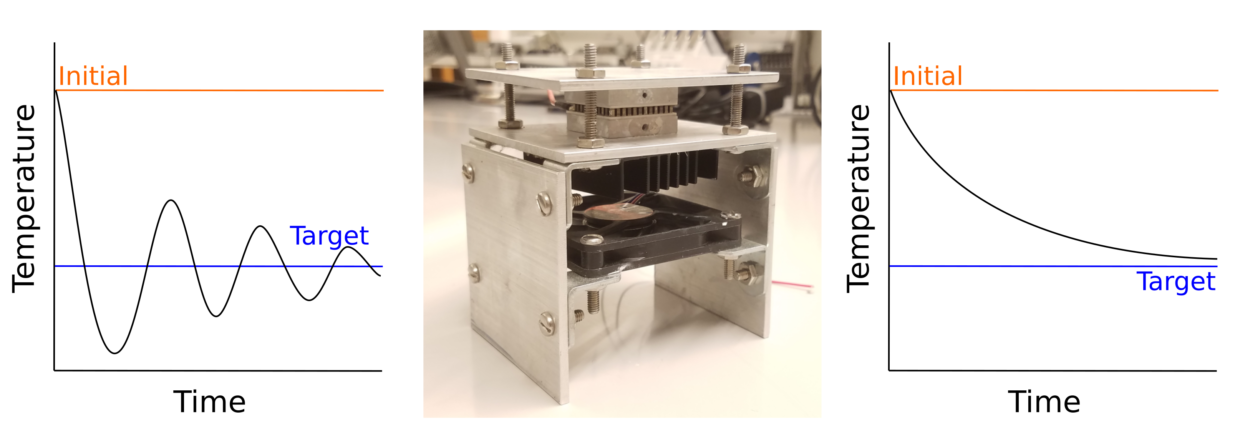How do you keep students engaged the week before break?
Converting a boring lab into a sport for engineers.
“The competition made it much more enjoyable, and it gave a an incentive to work harder.”
Modern Instrumentation Lab Student, Fall 2022
Student teams were rewarded with extra credit for reaching a target temperature with the fastest and most optimal response.
Testimonials
“The thermoelectric lab was the most interesting to me because of the competition, but also because it was a good way of combining everything we know.”
Modern Instrumentation Lab Student, Fall 2022
“I enjoyed your energy and the integration of competition. It made the labs more engaging.”
Modern Instrumentation Lab Student, Fall 2022
The Difference
“Conventional” Lab Exercise
1. At the start, students get step by step instructions on exactly what to test and measure from the lab handout and instructors.
2. Students spend significant time to figure out how the equipment works and to assemble the components.
3. Students take the bare-minimum required measurements, such as obviously underdamped, obviously overdamped, and somewhat close to critically damped, without really understanding why.
4. There is nothing “better” to aspire to, so students decide they are done. They were not challenged to think critically or optimize their control, so they struggle to think of good questions or other cases they would like to test.
5. Students leave halfway through the lab session.
6. Right before the report is due, students realize they don’t really understand the concepts and forgot to measure some data, causing them to perform poorly.
My Competition Lab
1. Before the lab, students learn from videos to explain how the equipment is operated and to review PID concepts.
2. At the start of the lab, I review basic safety and give an enthusiastic welcome to the competition. Students start working right away.
3. Student teams set up their circuit, LabVIEW PID control, and thermocouples, then collect “basic” measurements.
4. Teams compete to get the fastest time. Students are motivated to research PID control and devise systematic trial and error testing to be successful. I provide hints and talk through the approach with teams that are struggling to keep everyone competitive. They encounter other useful results such as underdamped and overdamped responses in the process of tuning their PID.
5. Teams continue to run tests up to the final second of the lab, eager to beat the other teams and improve their own high scores.
6. When writing the report, students are well-prepared because of their experience trying to optimize their PID control and their conversations with the instructors to guide their thinking.
The lab curriculum I developed is taught by the Santa Clara University Department of Mechanical Engineering˺ in the Modern Instrumentation for Engineers Lab. If you’re a current student – it’s cool you found this and you’re free to cite this if you want. However, consistent with my teaching philosophy, there are no answers here for the lab 😉
